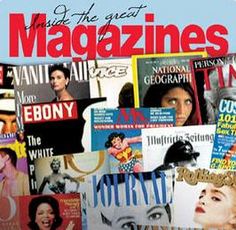
Recently I was scanning the local free weekly magazine during my lunch break. I usually go straight to the recipes and restaurant reviews as food is one of my passions. But along the way, I am sometimes drawn to read a regular column which highlights a happy partnership - a romantic and/or business relationship between two people. It may be a couple in love or two family members or friends who complement each other in their work together.
Happy partnerships
Each is interviewed to tell the story of how they came together in the partnership and why it works so well personally and business wise. Often there is a love story in there as they share how they met and what they love and appreciate most about their partner. It is set up in the form of “She says” “He says”, with each partner giving their separate glowing account of their partner and their relationship.
Accentuate the positive
This reminded me of what I do in therapy with couples who are caught up in the negative and have lost touch with why they want to stay together. I ask them to tell me the story of how they came to be together and what they like most about each other. It occurred to me that the magazine interview is a good format to do this as it encourages people to accentuate the positives in their relationship. Clearly a relationship has negatives too, but when you are being interviewed for a magazine, you tend to overlook these, just as you do when you first fall in love.
Happy partnerships
Each is interviewed to tell the story of how they came together in the partnership and why it works so well personally and business wise. Often there is a love story in there as they share how they met and what they love and appreciate most about their partner. It is set up in the form of “She says” “He says”, with each partner giving their separate glowing account of their partner and their relationship.
Accentuate the positive
This reminded me of what I do in therapy with couples who are caught up in the negative and have lost touch with why they want to stay together. I ask them to tell me the story of how they came to be together and what they like most about each other. It occurred to me that the magazine interview is a good format to do this as it encourages people to accentuate the positives in their relationship. Clearly a relationship has negatives too, but when you are being interviewed for a magazine, you tend to overlook these, just as you do when you first fall in love.

Rose coloured glasses?
Before you question the value of formulating a rose coloured version of your relationship, consider that the way our brain works. Neuroscientists acknowledge that our brains have a negativity bias, where we naturally notice and remember the negative. This has survival value – much safer to remember there was a sabre tooth tiger at the waterhole yesterday than a beautiful sunset.
Be mindful of the positive
As the Neuropsychologist Rick Hanson says – “The mind is Velcro for the negative and Teflon for the positive”. Thus, we do need to actively choose to be mindful of the positive, as awareness of the negative comes without effort and sticks.
Positive to negative ratios
Further support of this approach to life comes from recent studies in the field of positive psychology. Researchers have found that people who “flourish” in life are more attentive to pleasant versus unpleasant experiences, with a ratio of three to one. Those who “languish” have a ratio closer to one positive to one negative.
And also consider the research by one of the leading couple therapists in the world - John Gottman. He found that happy couples maintain interest and soothing during a conflict by having a ratio of five positive statements to one negative. They also use positive emotions to de-escalate conflict so they are calm enough to resolve the issue. So doing anything that makes you feel better and more able to access the positive will help when your relationship is not going so smoothly.
Before you question the value of formulating a rose coloured version of your relationship, consider that the way our brain works. Neuroscientists acknowledge that our brains have a negativity bias, where we naturally notice and remember the negative. This has survival value – much safer to remember there was a sabre tooth tiger at the waterhole yesterday than a beautiful sunset.
Be mindful of the positive
As the Neuropsychologist Rick Hanson says – “The mind is Velcro for the negative and Teflon for the positive”. Thus, we do need to actively choose to be mindful of the positive, as awareness of the negative comes without effort and sticks.
Positive to negative ratios
Further support of this approach to life comes from recent studies in the field of positive psychology. Researchers have found that people who “flourish” in life are more attentive to pleasant versus unpleasant experiences, with a ratio of three to one. Those who “languish” have a ratio closer to one positive to one negative.
And also consider the research by one of the leading couple therapists in the world - John Gottman. He found that happy couples maintain interest and soothing during a conflict by having a ratio of five positive statements to one negative. They also use positive emotions to de-escalate conflict so they are calm enough to resolve the issue. So doing anything that makes you feel better and more able to access the positive will help when your relationship is not going so smoothly.

A soothing resource
This ”magazine interview” tool could be a resource for any couple to access and enrich their relationship. Consider taking some time to imagine what you would say about your partner if interviewed and even giving your partner a copy of your “interview”. The one rule, aside from highlighting the positive, is that it must all be true and sincerely believed.
Written, spoken or imagined
Your “magazine interview” could be done formally and explicitly, so that each of you writes a short “essay” about what you would say if interviewed. You could then give it to your partner to read. Or you could take some time to sit with each other and talk about what you might say if interviewed. This could become a regular connecting ritual where you may share what you have appreciated most about your partner/relationship over the past month.
It could also be done more informally and on the go at times of irritation or after conflict when you are just wanting to shift into a more loving and positive mindset about your partner. So you could just imagine what you would say if being interviewed. You may never share this, but just use it yourself as a calming tool.
Experiment with it. You may be surprised at what you discover. See below for three examples of these magazine interviews.
This ”magazine interview” tool could be a resource for any couple to access and enrich their relationship. Consider taking some time to imagine what you would say about your partner if interviewed and even giving your partner a copy of your “interview”. The one rule, aside from highlighting the positive, is that it must all be true and sincerely believed.
Written, spoken or imagined
Your “magazine interview” could be done formally and explicitly, so that each of you writes a short “essay” about what you would say if interviewed. You could then give it to your partner to read. Or you could take some time to sit with each other and talk about what you might say if interviewed. This could become a regular connecting ritual where you may share what you have appreciated most about your partner/relationship over the past month.
It could also be done more informally and on the go at times of irritation or after conflict when you are just wanting to shift into a more loving and positive mindset about your partner. So you could just imagine what you would say if being interviewed. You may never share this, but just use it yourself as a calming tool.
Experiment with it. You may be surprised at what you discover. See below for three examples of these magazine interviews.
 RSS Feed
RSS Feed